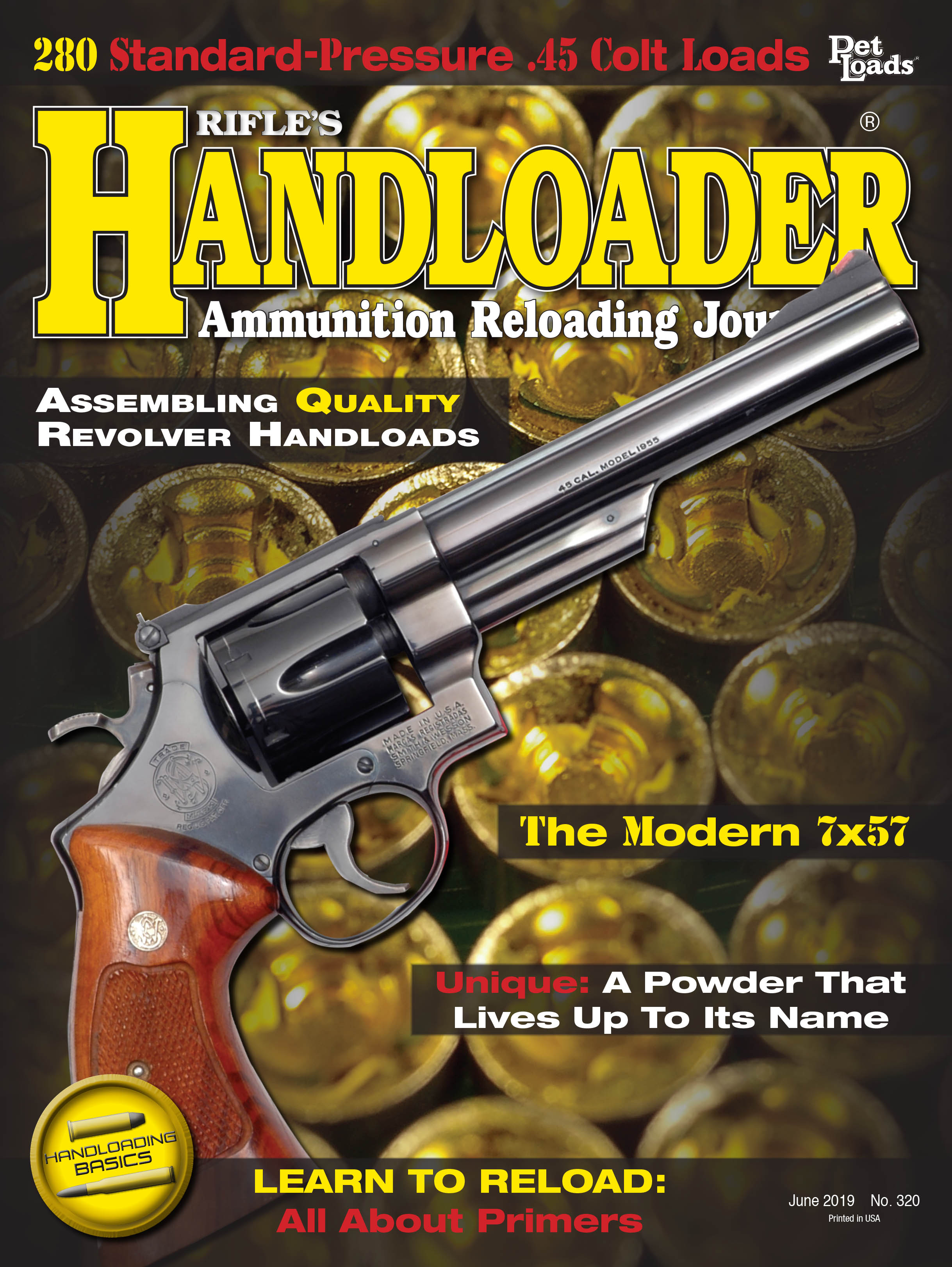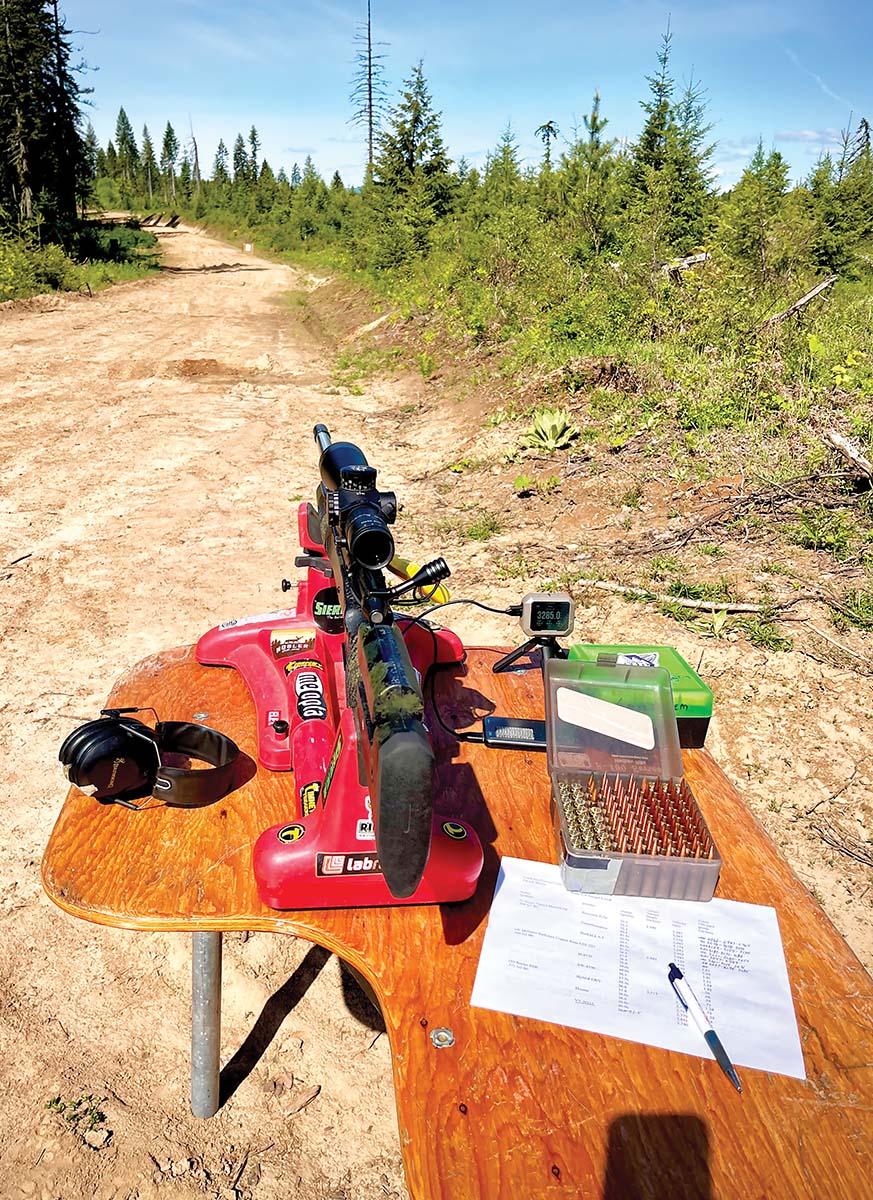
Shooting was conducted from a sturdy bench and a MTM Case-Gard K-Zone Shooting Rest. All velocities were established with a Garmin Xero C1 Pro chronograph.
The 6mm GT was created in 2019 by George Gardner of
GA Precision (GAP) and Tim Jacobs, owner of
Vapor Trail Bullets. Their goal was to find an ideal balance in the world of Precision Rifle Series (PRS) and National Rifle League (NRL) precision rifle cartridges. Sitting neatly between the smaller 6mm Dasher and larger 6mm XC, the 6mm GT occupies a niche that some argue provides a slight competitive edge, slight being good enough in these highly demanding shooting disciplines to warrant interest. The 6mm GT also makes a fine cartridge for long-range varmint and predator shooting, as well as lighter big-game hunting such as pronghorn, Coues whitetail, Eastern whitetail, mule deer and hogs at moderate ranges. As a testament to the round’s growing popularity,
Hornady began offering 6mm GT factory rounds and brass early in 2025.
Lapua has also released 6mm GT brass this year. Cases can also be formed from 6x47 Lapua brass.
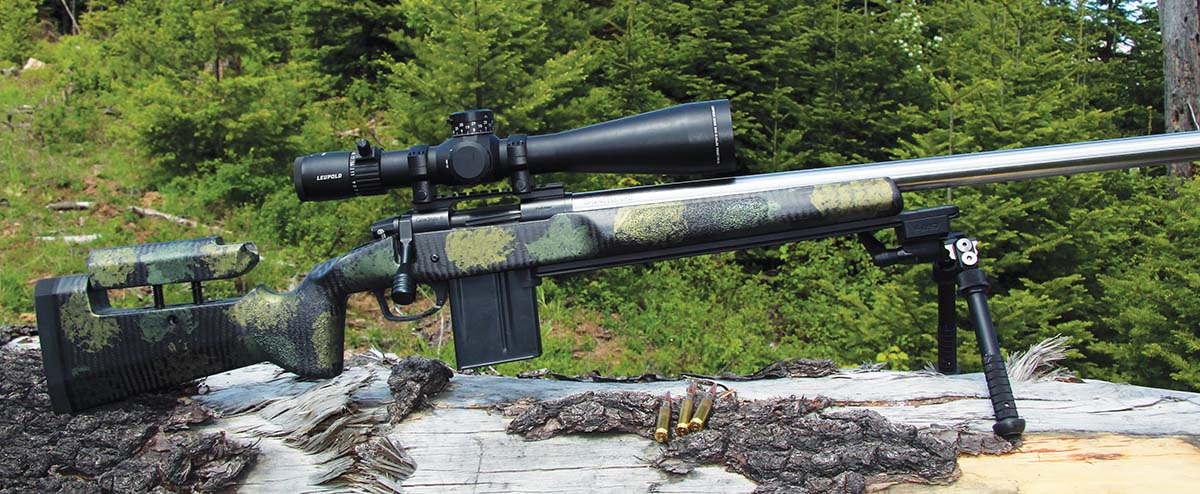
GA Precision is calling the Pinnacle Production Rifle (PPR) the most accurate production rifle on the market today. It comes with a ½-MOA accuracy guarantee, which the rifle easily exceeded with select handloads.
The niche that the 6mm GT fills also addresses the shortcomings of some of the most popular 6mm competition cartridges available today. The larger 6mm Creedmoor, for instance, makes it difficult to maintain the single-digit extreme velocity spreads now considered a requisite for high-level competitive shooting, where 1,000-plus yard targets are common. The 6mm BR-based wildcat cartridges have traditionally proven challenging in various ways, first due to the lack of factory ammunition in most cases, the high cost of components for nearly all and often tedious case-forming procedures. These squatty rounds also tend to suffer from frustrating feeding issues in rifles fed from AICS-style detachable box magazines. This can cost shooters precious time in a competitive atmosphere and ultimately podium finishes.
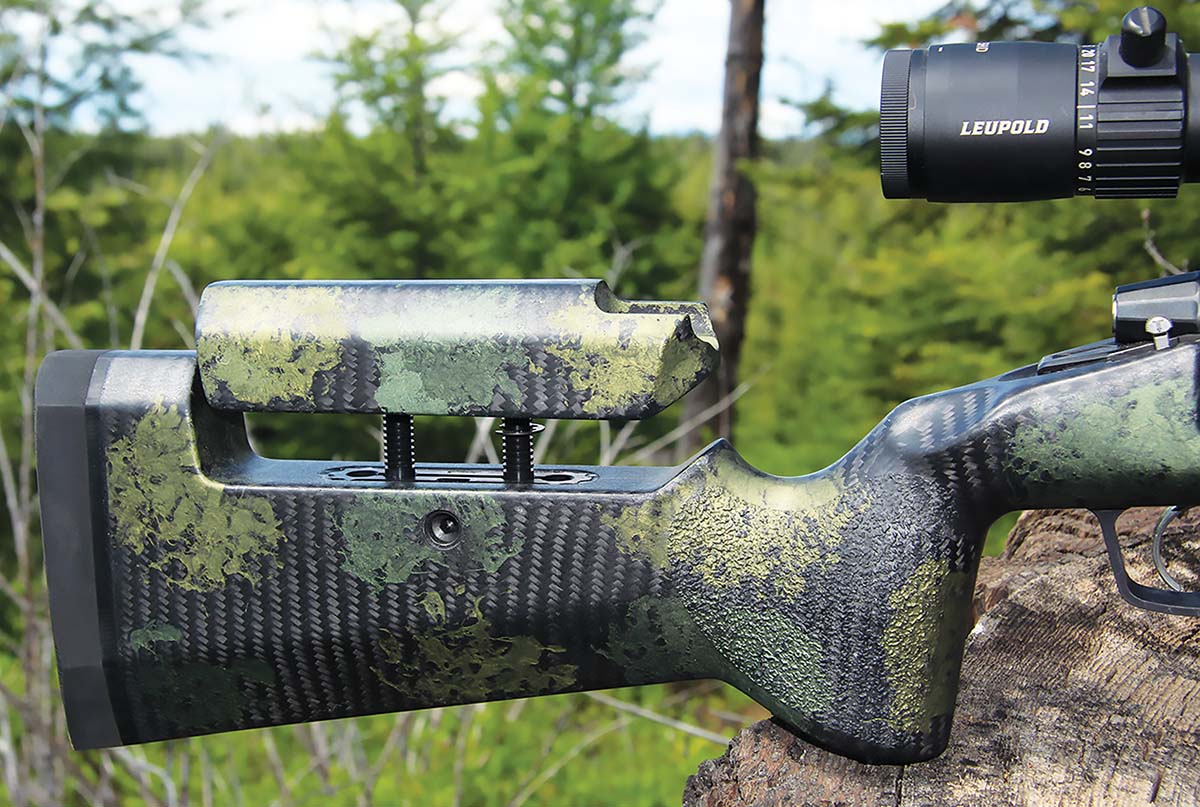
The PPR is based in a Manners MCS-T2A-GAP Elite Everglades stock, which includes a KMW Adjustable Cheek raiser to ensure perfect eye alignment behind any scope/ring combination.
The 6mm GT promises low extreme velocity spreads and consistent standard deviations in addition to affordable brass, factory ammunition and smoother feeding from detachable magazines. The 6mm GT measures .100-inch longer than the 6mm Dasher from base to shoulder junction, providing slightly more power capacity, and includes a 35-degree shoulder to the Dasher’s 40-degree shoulder angle. Thirty-five degrees might be considered an ideal compromise between extracting the most efficient burn from a charge of powder versus reliable feeding. The GT’s neck is .050-inch longer than the Dasher. This adds up to 6mm GT brass that is .150-inch longer overall than the 6mm Dasher. The case design enables the GT to feed from unmodified 308 Winchester magazines, further solving the feeding issues inherent to many Dasher rifles. This also makes the GT pretty forgiving for handloaders, ensures long barrel life and makes it compatible with AR-style platforms, though it remains most popular in bolt rifles. Reloading brass is available from GA Precision, used for testing here,
Alpha Munitions, Hornady, and by the time this hits mailboxes, Lapua of Finland. All use small rifle primers.
I have had a hankering to run a 6mm GT through the paces since it first appeared on the scene. Browning introduced some rifles a couple of years ago, but they were SHOT Show Specials and difficult to get your hands on. So, I went straight to the man himself, chatting with GA Precision owner George Gardner while attending the 2025 SHOT Show. He graciously agreed to ship a test rifle and a supply of 6mm GT brass.
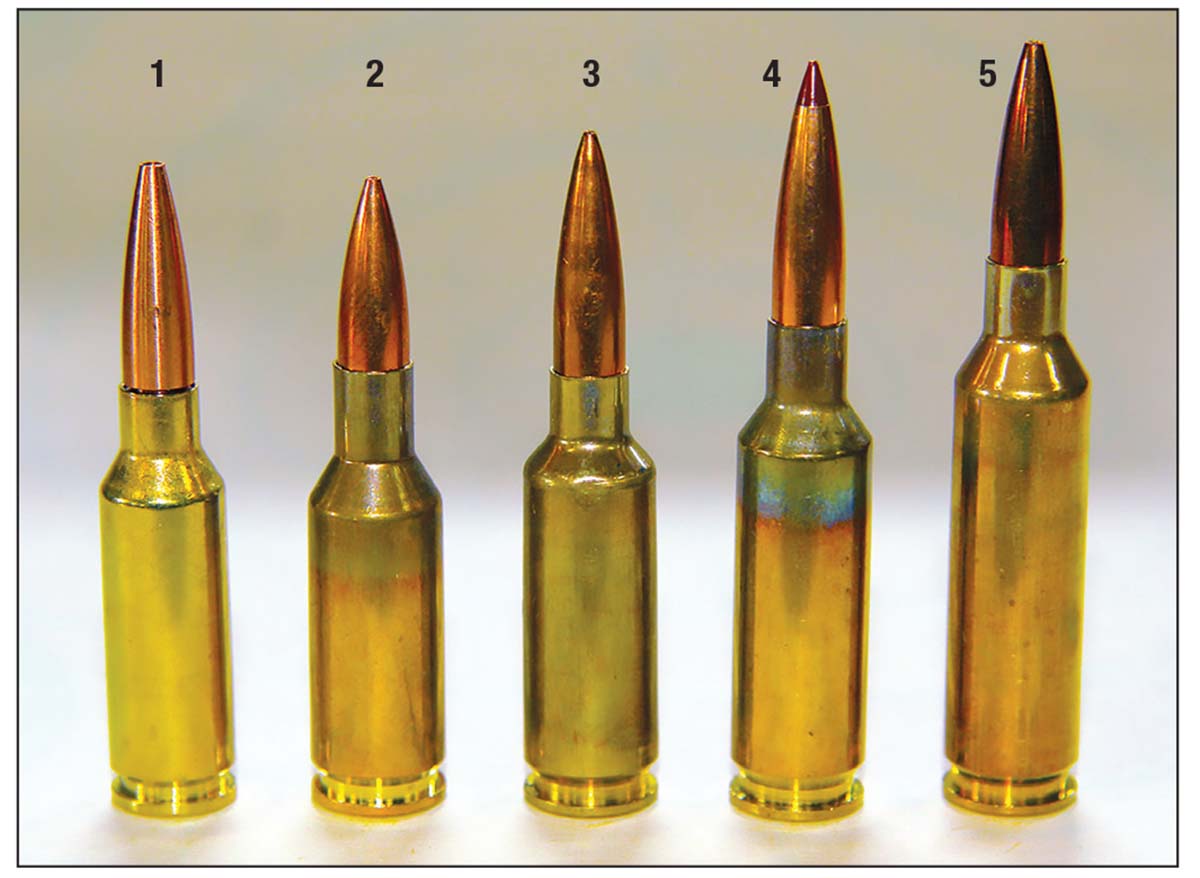
Shown for size comparison are the: (1) 6mm ARC, (2) 6mm BR (Bench Rest), (3) 6mm Dasher, (4) the 6mm GT under discussion here and (5) 6mm Creedmoor.
The test rifle was one of GA Precision’s newly refined
Pinnacle Production Rifles (PPR). GA Precision calls this rifle the most accurate production rifle on the market and an ideal PRS starter rig. For 2025, the PPR is built on a GA Precision Gladius II short action, which includes a spiral-fluted, two-lug bolt with a 75-degree bolt throw and M-16-style extractor. A 20 minute of angle (MOA) scope base is pinned and held in place with screws, and the action includes an integral recoil lug. The action and bolt are black-nitride finished, and the Bartlein stainless-steel 5R barrel is 26 inches long, and includes a MY+ contour (about 1.01 inches in diameter just behind the muzzle brake) and fast 1:7.2 twist rate. The muzzle includes 5⁄8x24 threads, and the rifle is delivered with a thread protector. GAP muzzle brakes are sold separately; however, the test rifle arrived with a slotted brake already installed. The PPR rifle’s standard chambering is the 6mm GT. The
TriggerTech Special trigger is set at the factory to break crisply at 2.5 pounds. My scale puts it closer to 2.35 pounds.
The PPR is bedded in a Manners MCS-T2A-GAP Elite Everglades stock. The GAP version of this stock includes a forearm with a flat bottom, making it easy to attach popular rail systems. GAP performed this for me with the test rifle, the entire forearm plus a 2-inch extension holding an ARCA rail. The stock includes a KMW Adjustable Cheek Raiser and an MCS GEN 2 Mini Chassis. The system is AICS and Accurate Mag 5- and 10-round magazine compatible, and one sling stud and two QD flush cups are installed. These stocks are predrilled for easy installation of an optional Torchworks Steel weight-tunable ARCA-Swiss rail. GA Precision can also set buyers up with optics, ARCA accessory rails, magazines, bipods, muzzle devices and Mini Chassis Bedding (1⁄2-MOA guarantee without bedding; 3⁄8-MOA guarantee with bedding). The PPR’s base MSRP is $2,999.99.

The smallest group of the entire test was produced by a combination of Hornady’s 110-grain A-Tip Match bullet and 36 grains of Vihtavuori N555 powder. Muzzle velocity was 2,752 fps.
The folks at GA Precision provided an
Area 419 ARCALOCK Clamp with an Atlas Bipod and a
Leupold Mark 5HD 5-25x 56mm FFP scope mounted in 35mm Leupold Backcountry Cross-Slot four-screw rings. Leupold says the 30-ounce Mark 5HD 5-25x 56mm weighs 20 ounces less than comparable riflescopes. It includes the company’s FFP PR2-MIL Reticle, and the turrets provide 120 MOA/35 MIL of elevation adjustment and 60 MOA/17 MIL of windage corrections through three revolutions of elevation adjustment (10.5 MIL per elevation revolution, 10 MIL per windage revolution). The 50-yard to infinity parallax is manipulated through an ergonomic side wheel, and the windage turret is capped. Eye relief is a generous 3.6 to 3.8 inches, low to high magnification. Leupold’s Professional-Grade Optical System, featuring glare reduction technology and a 56mm objective lens, maximizes light transmission and is 100 percent fog and waterproof. Turret corrections are both tactile and audible. They also now include larger etched turret numbers for those of us with aging eyes. A high-speed throw lever is provided. The U.S.-made scope retails for $2,199.99. As delivered, the PPR weighed a touch more than 17 pounds.
After sight-in, shooting five, three-shot/100-yard groups using Hornady Match factory ammunition loaded with the company’s new 109-grain ELD Match bullet, the best group measured .34-inch center to center, the worst .56-inch. Velocity for those 15 shots averaged 2,853 feet per second (fps), with a 77 fps extreme velocity spread. With a single 2,913 fps outlier eliminated, velocity averaged 2,841 fps, with a 20 fps extreme velocity spread.
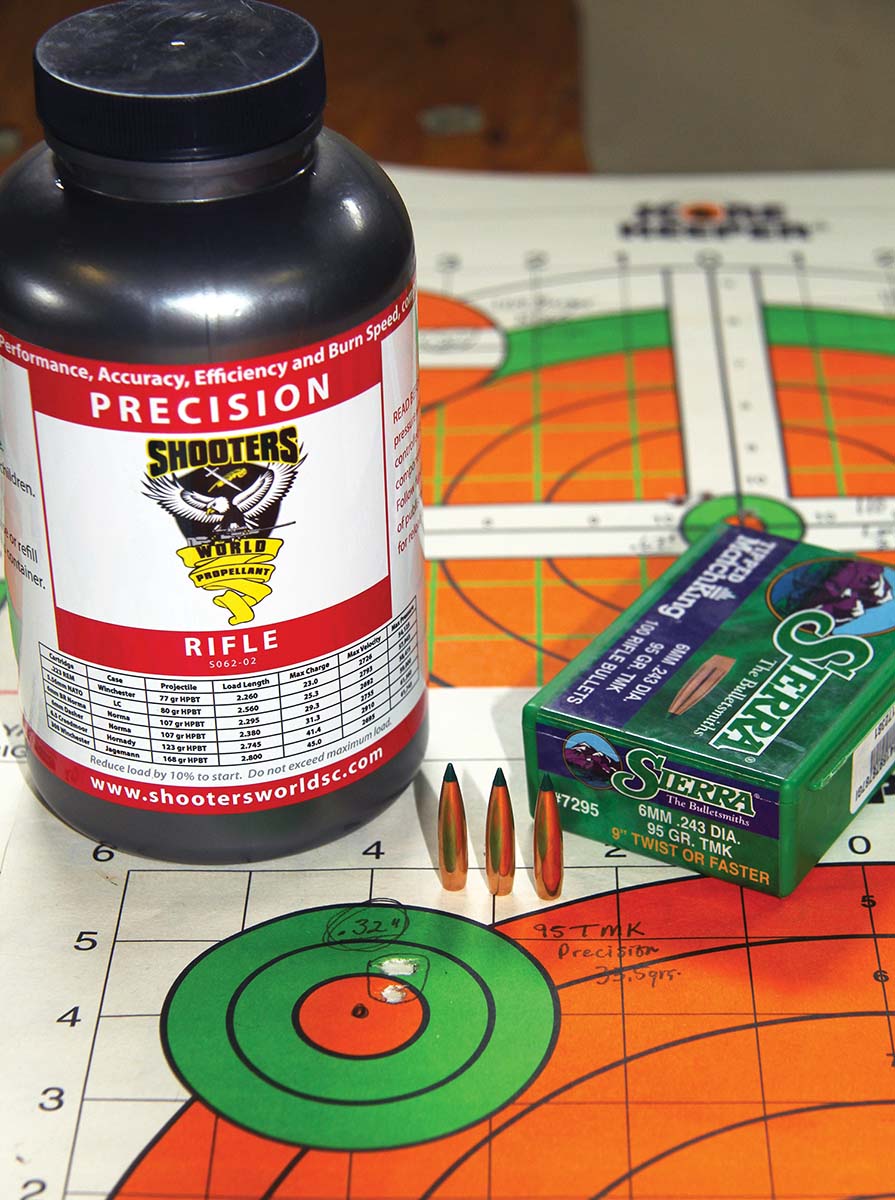
Sierra’s 95-grain Tipped MatchKing (TMK) bullet combined with 35.5 grains of Shooters World Precision Rifle powder produced this .32-inch group and a muzzle velocity of 2,950 fps.
With those details settled, I began assembling components, seeking the most promising long-range target bullets with best-in-class ballistic coefficients (BCs) and wind-bucking abilities. On the light end, I chose
Sierra’s 95-grain Tipped MatchKing. Its signature green polymer tip and sleek boat-tail profile add up to create a solid .500 G1 BC. From experience, I know it also expands sufficiently on burrowing rodents such as prairie dogs and especially rockchucks. At 102 grains, the
McGuire Ballistics Copper Rose also includes a .500 G1 BC, which is very high for a nontoxic, monolithic copper bullet. This is a non-expanding target bullet. Nosler’s 105-grain RDF consists of a .571 G1/.280 G7 BC via its microscopic melplat and ultra-sleek BTHP design. This is the highest BC I’m aware of in a 105-grain/6mm bullet. The 109-grain Long Range Hybrid Target is an aerodynamic Berger offering a .568 G1/.292 G7 BC created through an extra-long ogive, boat-tail and tiny melplat. The Long Range Hybrid requires a 1:8 rifling twist. Finally, Hornady’s 110-grain A-Tip uses a precision-milled aluminum tip and spear-like AMP jacket to produce a .604 G/.304 G7 BC. Hornady recommends a 1:7.7 rifling twist for complete stabilization of the A-Tip. I’d wager the PPR’s 1:7.2 rifle twist was included to specifically accommodate this bullet down to sea level, which is popular with a lot of professional PRS shooters.
The 6mm GT was designed to provide 100 percent case fill with about 35 grains of Hodgdon Varget powder. Powders included in this test sat between Vihtavuori N140 and Hodgdon Varget at the fast end and Hodgdon Superformance and Ramshot Hunter at the slow end. Shooters World Precision Rifle, Long Rifle, SW-4350, Winchester StaBALL 6.5, Hodgdon CFE 223, H-4350 and Hybrid 100V also proved compatible. They were chosen for inclusion here.

Berger’s 109-grain Long Range Hybrid Target bullet seated over 38.5 grains of Vihtavuori’s new N565 powder produced this .31-inch group, which was sent at 2,752 fps.
The only glitch encountered during loading involved the McGuire monolithic copper bullets, which held milled pressure-relief grooves, and the Hornady 110-grain A-Tip with its long bearing surface. Several case shoulders collapsed during seating, ruining brass, until an aggressive inside chamfer was applied.
Between the 17-pound rifle, installed muzzle brake, and mild-mannered 6mm GT cartridge, the PPR was one of those rifles that’s a joy to shoot. I could squeeze the trigger and watch bullet holes appear on the target. It was also pleasantly accurate, and accurate rifles are always more fun to shoot than those producing ho-hum accuracy. Twenty-three of the 45 loads, or about 51 percent, resulted in extreme velocity spreads in the teens or less, the highest concentration produced by the Berger 109-grain bullet and Vihtavuori N140 and N565, and Hodgdon Varget. Superformance and the 95-grain Sierra produced very low extreme velocity spreads but terrible groups (for this rifle), making me believe seating depth was more to blame than the powders chosen or the bullet itself.
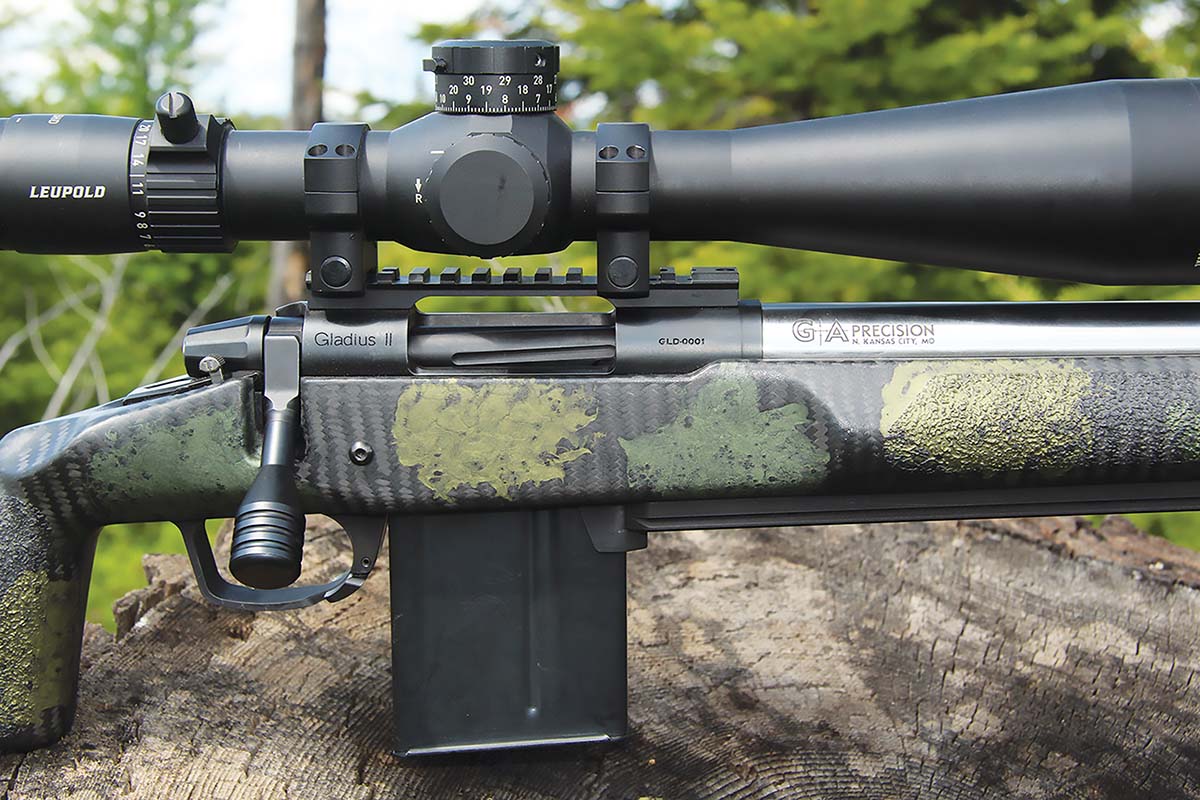
GA Precision’s new Pinnacle Production Rifle (PPR) was used as a test vehicle. This rifle is built around a new Gladius II action. It sports a spiral-fluted, two-lug bolt with a 75-degree bolt throw, M16-style extractor, integral recoil lug and 20 MOA scope base that is pinned and screwed into place.
Interestingly, the overall group average for each bullet decreased as weight increased, from .86 inch for the 95-grain bullet to .54 inch for the 110-grain bullet. The McGuire bullet averaged .67 inch with all powders it was paired with. Of course, this could be due to some of the powders chosen, but as mentioned earlier, seating depth and the need for the bullet to make a longer jump into the lands with the shorter, lighter bullets. I almost compulsively seat bullets so the top of the boat-tail (or flatbase when that is the case) reaches the case neck/shoulder junction. The 6mm GT includes pretty generous neck length, so better accuracy might be realized with light bullets by marking the neck at exactly .243 inch and seating the top of the boat-tail to that point, or a touch above the shoulder/neck junction. Further experiments with 90- to 95-grain big-game bullets should be forthcoming via
LoadData.com, so I will be able to test that theory.

The rifle used for testing arrived with an optional Torchworks Steel tunable ARCA-Swiss rail. To this GA Precision added an Area 419 ARACALLOCK Clamp and Atlas Bipod.

The test rifle included an installed Leupold’s Mark 5HD 5-25x 56mm scope with a FFP PR2-MIL Reticle. The turrets allow 120 MOA/35 MIL of elevation adjustment and 60 MOA/17 of windage corrections.
For what it’s worth, the speed node that resulted in by far the highest number of the tightest groups assembled with each individual powder, sat between 2,800 and 3,000 fps. Those who might like to use the 6mm GT for deer hunting would find the 3,300-plus fps Superformance and StaBALL 6.5 95-grain loads to be effective, but then again, a 103-grain Hornady ELD-X, or
Berger’s 109-grain Elite Hunter or
115-grain VLD Hunting would fall right into the parameters this cartridge was designed for.
This project really got my gears turning, wondering which of my 308 Winchester short-action rifles could be re-barreled to create my own 6mm GT. I’ve bagged white-tailed deer and a couple dozen hogs with the 6mm ARC, so the 6mm GT would only provide a flatter trajectory and more on-target energy delivery, without a substantial increase in recoil.










.jpg)


